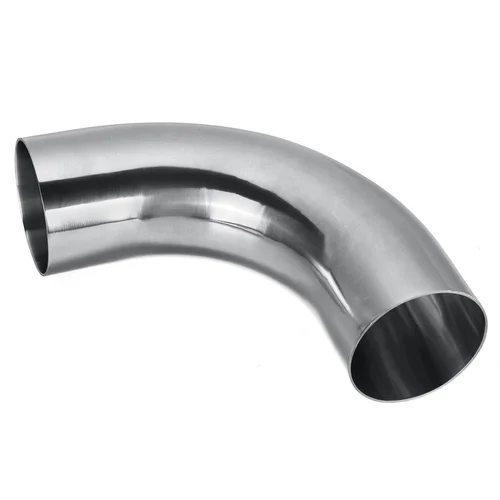-
Cangzhou Yulong Steel Co., Ltd.
-
Phone:
+86 13303177267 -
Email:
admin@ylsteelfittings.com
- English
- Arabic
- Italian
- Spanish
- Portuguese
- German
- kazakh
- Persian
- Greek
- French
- Russian
- Polish
- Thai
- Indonesian
- Vietnamese
- Zulu
- Korean
- Uzbek
- Hindi
- Serbian
- Malay
- Ukrainian
- Gujarati
- Haitian Creole
- hausa
- hawaiian
- Hebrew
- Miao
- Hungarian
- Icelandic
- igbo
- irish
- Japanese
- Javanese
- Kannada
- Khmer
- Rwandese
- Afrikaans
- Albanian
- Amharic
- Armenian
- Azerbaijani
- Basque
- Belarusian
- Bengali
- Bosnian
- Bulgarian
- Catalan
- Cebuano
- China
- China (Taiwan)
- Corsican
- Croatian
- Czech
- Danish
- Esperanto
- Estonian
- Finnish
- Frisian
- Galician
- Georgian
- Kurdish
- Kyrgyz
- Lao
- Latin
- Latvian
- Lithuanian
- Luxembourgish
- Macedonian
- Malgashi
- Malayalam
- Maltese
- Maori
- Marathi
- Mongolian
- Myanmar
- Nepali
- Norwegian
- Norwegian
- Occitan
- Pashto
- Dutch
- Punjabi
- Romanian
- Samoan
- Scottish Gaelic
- Sesotho
- Shona
- Sindhi
- Sinhala
- Slovak
- Slovenian
- Somali
- Sundanese
- Swahili
- Swedish
- Tagalog
- Tajik
- Tamil
- Tatar
- Telugu
- Turkish
- Turkmen
- Urdu
- Uighur
- Welsh
- Bantu
- Yiddish
- Yoruba

aug . 05, 2024 19:39 Back to list
Exploring the Benefits and Applications of Rubber Molded Components in Various Industries
Understanding Rubber Molded Parts Applications and Advantages
Rubber molded parts play an essential role in various industries, ranging from automotive to consumer goods, aerospace, and electronics. This versatile manufacturing process involves shaping rubber compounds to create high-performance components that display excellent durability, flexibility, and resistance to environmental factors. As technology evolves, the demand for rubber molded parts continues to rise, driven by their broad applicability and performance characteristics.
The Manufacturing Process
The creation of rubber molded parts typically begins with selecting the appropriate rubber material based on the specific application. Common materials include natural rubber, silicone, neoprene, and EPDM (ethylene propylene diene monomer). Each type possesses unique properties that make it suitable for different environments. For instance, silicone is noted for its thermal stability, making it ideal for applications that require resistance to extreme temperatures.
Once the material is selected, the rubber is processed using various techniques, with compression, transfer, and injection molding being the most prevalent. In compression molding, rubber is placed in a heated mold and allowed to set under pressure. This method is particularly efficient for producing large parts and offers a cost-effective solution for high-volume production. Transfer molding, on the other hand, involves transferring rubber from a cup into a heated mold, which allows for more intricate designs and better control of the material flow. Injection molding provides the highest levels of accuracy and is used for creating complex geometries and finer details.
Applications of Rubber Molded Parts
Rubber molded parts are utilized in numerous applications across diverse industries. In the automotive sector, these components are found in seals, gaskets, bushings, and vibration dampers, where they help improve safety, performance, and comfort in vehicles. For instance, rubber seals are crucial in preventing leaks, while bushings minimize noise and vibrations from the road.
In the consumer goods market, rubber molded components can be found in products such as kitchenware, toys, and athletic equipment. Their flexibility and durability make them ideal for applications where repetitive movement or exposure to various chemicals is expected.
rubber molded parts

The aerospace and medical sectors also rely heavily on rubber molded parts to meet stringent safety and performance specifications. In aerospace, rubber components are used in critical applications like sealing systems and fuel hoses, while in the medical industry, they are essential for manufacturing disposable supplies, such as syringes and protective gloves.
Advantages of Rubber Molded Parts
One of the primary advantages of rubber molded parts is their ability to resist wear and tear. Rubber's elasticity allows parts to absorb shocks and vibrations effectively, making them long-lasting and reliable. Furthermore, rubber is inherently resistant to corrosion, which is especially beneficial in applications exposed to harsh chemicals or extreme weather conditions.
Another significant benefit is the cost-effectiveness of rubber molding processes, particularly for high-volume production runs. The speed of the manufacturing process, coupled with minimal waste generation, allows manufacturers to produce parts more efficiently, saving both time and resources.
Additionally, the versatility of rubber materials permits customization to meet specific demands. By adjusting the formulation and design, manufacturers can create tailored solutions that address unique challenges faced by different industries.
Conclusion
In conclusion, rubber molded parts are indispensable in a multitude of industries due to their exceptional properties, manufacturing flexibility, and broad applicability. As innovations continue to shape the future of manufacturing, the significance of these components is bound to grow even further, enhancing performance and reliability in everyday products and critical applications alike. Understanding the myriad benefits and functionalities of rubber molded parts not only highlights their importance but also showcases the remarkable capabilities of modern manufacturing techniques.
Latest news
-
ANSI 150P SS304 SO FLANGE
NewsFeb.14,2025
-
ASTM A333GR6 STEEL PIPE
NewsJan.20,2025
-
ANSI B16.5 WELDING NECK FLANGE
NewsJan.15,2026
-
ANSI B16.5 SLIP-ON FLANGE
NewsApr.19,2024
-
SABS 1123 FLANGE
NewsJan.15,2025
-
DIN86044 PLATE FLANGE
NewsApr.19,2024
-
DIN2527 BLIND FLANGE
NewsApr.12,2024
-
JIS B2311 Butt-Welding Fittings LR/SR 45°/90° /180°Seamless/Weld
NewsApr.23,2024











